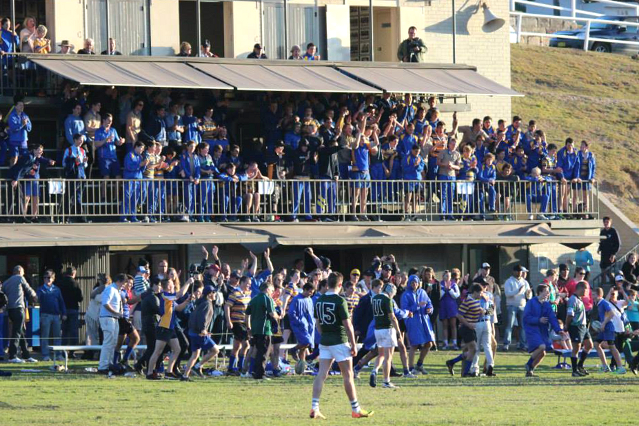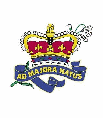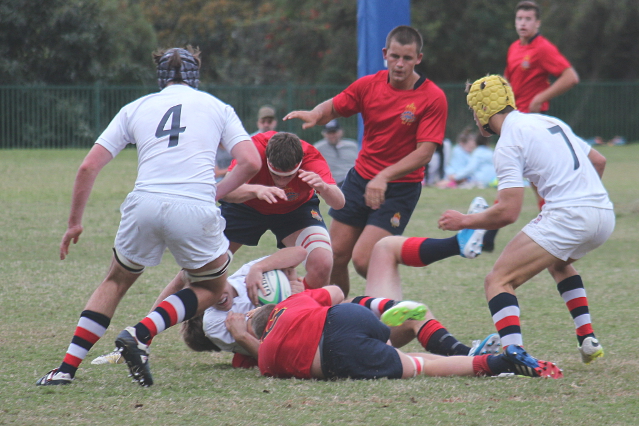Barker
Equal third, four wins.
This was always going to be a tough season for Barker, with three outstanding veterans (Nick Burkett, Stephen Kirkby and David Smerdon) carrying a very heavy load in an otherwise untried team. To make matters worse, Kirkby’s season was ended early by injury, and while Barker was always competitive, it never posed a threat to Knox or Cranbrook after that.
 Tall centre Sean Campbell had a commendable season, running fearlessly and effectively, and underweight flanker Tim Pearson was impressive, foraging tirelessly for the ball. No8 Harry Phipps worked hard, full back David Balcomb was generally reliable with the boot, and Burkett and Smerdon showed their class on several occasions.
Tall centre Sean Campbell had a commendable season, running fearlessly and effectively, and underweight flanker Tim Pearson was impressive, foraging tirelessly for the ball. No8 Harry Phipps worked hard, full back David Balcomb was generally reliable with the boot, and Burkett and Smerdon showed their class on several occasions.
High point: the 46-0 win over Waverley. Low point: the loss of Kirkby.
Verdict: Three snorts.
Waverley
Equal third, four wins.
It could have gone horribly wrong for Waverley. A weaker-than-usual age group began the season abysmally, with a pre-season drubbing (0-82) at the hands of St Augustine’s. Early on, the team’s defence was porous and its only idea in attack was to give the ball to Henry Patterson at 10 and see how far he could run on his own.
 But what was shaping up as a catastrophic season was redeemed by some determined efforts, especially in the latter half of the draw. A wonderfully gritty performance unseated Knox in Round 6, and there were good wins over St Aloysius, Trinity and Barker.
But what was shaping up as a catastrophic season was redeemed by some determined efforts, especially in the latter half of the draw. A wonderfully gritty performance unseated Knox in Round 6, and there were good wins over St Aloysius, Trinity and Barker.
Second-rower Justin Cooper and No8 Zac Cardassilaris stood out among the forwards, while in the back line the introduction of young fly-half Tyzac Bailey added a new dimension, sparking the backs and allowing the gifted Patterson to move to his more natural position at 12.
High point: the win over Knox. Low points: leaking 40 points in each of the first four games.
Verdict: Three snorts.

St Aloysius
Fifth, three wins.
There were relatively low expectations for a very young St Aloysius side, but whilst the side was predictably outmatched by Knox and Cranbrook, it competed tenaciously and was a good match for all the other schools.
 Flanker Nick Slaven was the standout in a smallish forward pack, while Rory Vevers, in his third season in the 1st XV, was always an attacking threat when the ball went wide. James Dainton at 10 organised him team well with an excellent passing and kicking game.
Flanker Nick Slaven was the standout in a smallish forward pack, while Rory Vevers, in his third season in the 1st XV, was always an attacking threat when the ball went wide. James Dainton at 10 organised him team well with an excellent passing and kicking game.
The team grew in confidence as it gained experience, winning three of its last five games, and St Aloysius has good reason to approach 2015 with confidence.
High point: Defeating Waverley 19-3, thanks to a Vevers hat-trick. Low point: the slow start to the season, with five straight defeats.
Verdict: Three snorts.
Trinity
Sixth, two wins.
You could say that Trinity was unlucky with injuries. Or you could say that it paid the price for poor depth. The season began well with two good wins, but that was as good as things got at Summer Hill. By the end of the season, one of the Under-16 coaches was telling people – “I used to coach the 16As, now I coach the Bs, because the As have all gone up to the Firsts!”
 The upside for Trinity is the hope that the young players who were blooded this year will be tougher and harder to push around next year. There’s talent to work with – second-rower Liam Rasch is a terrific prospect, as are flanker Fillipo Pernell and goal-kicking back Ryan Longville, and powerful hooker Anthony Nguyen has another year.
The upside for Trinity is the hope that the young players who were blooded this year will be tougher and harder to push around next year. There’s talent to work with – second-rower Liam Rasch is a terrific prospect, as are flanker Fillipo Pernell and goal-kicking back Ryan Longville, and powerful hooker Anthony Nguyen has another year.
But Trinity needs a deeper pool of talent, because when injury strikes (it cost exciting full-back Rihann Barkley-Brown most of the season), no points are awarded for having a good team sitting on the sidelines.
High point: scoring 40 points against Waverley for only the second time in 70 years. Low point: the 8-81 defeat at Cranbrook was the highest score ever against a Trinity 1st XV, and its heaviest margin of defeat.
Verdict: Two snorts.

